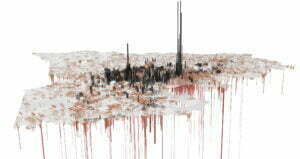Urban3 worked with the City of Eugene to analyze how the community pays for its infrastructure. Our work examined and visualized the costs and revenues of development at a parcel level, through a Cost of Services analysis. Our objective was threefold: to determine whether the community is able to pay for its infrastructure, to identify the net cost of different patterns of development and land use, and to provide Eugene with suggestions for becoming more fiscally sustainable.

Urban3 found that Eugene’s development pattern is dominated by single family housing (80%) which generally runs at a slight deficit with regards to its ability to pay for infrastructure. Overall, this means that the city is not able to afford its infrastructure liability. We also found that denser, compact development and infill development not only pay for themselves, but also produce a surplus, which can offset the losses created by low-density development.

Outcomes
- Urban’s work gave Eugene City staff language to use to confront biases about development
- The project created a cultural shift at staff level and connected departments that had been siloed.
- After seeing our work, Eugene advocated to eliminate single-family zoning state-wide.

